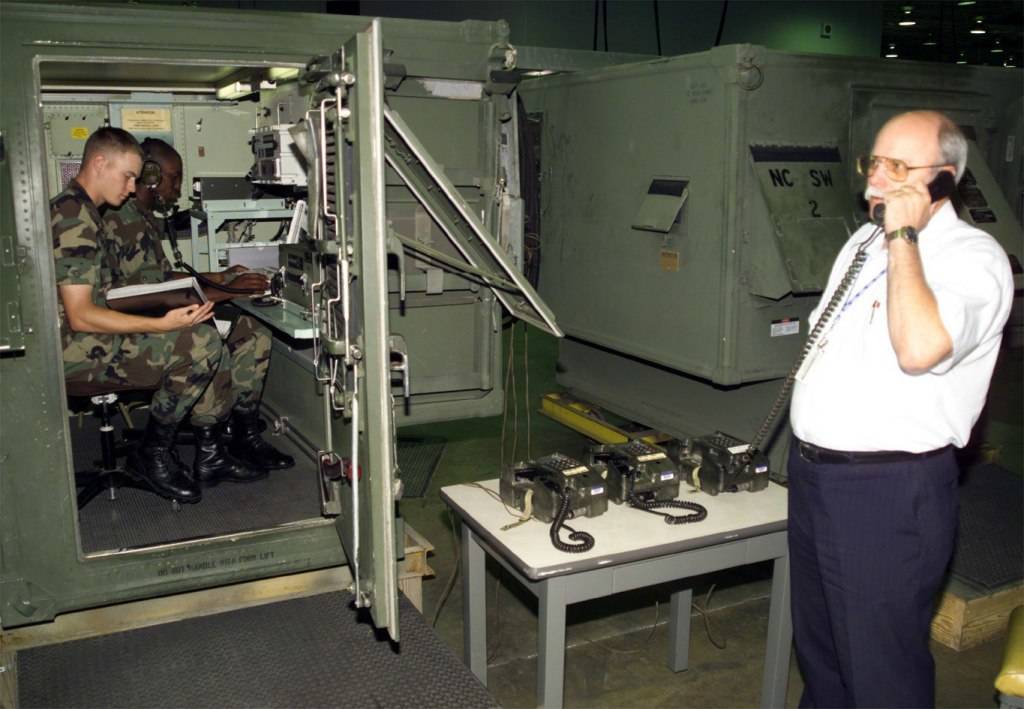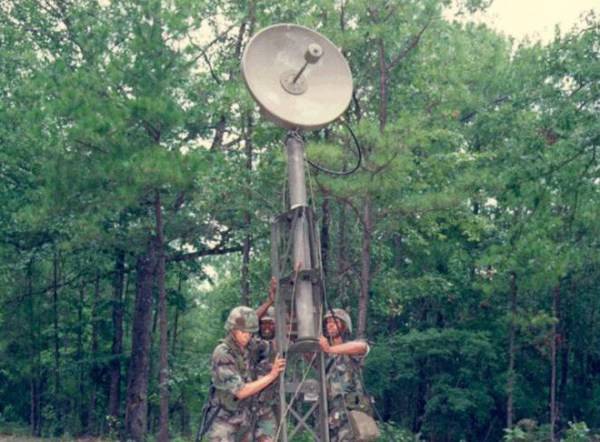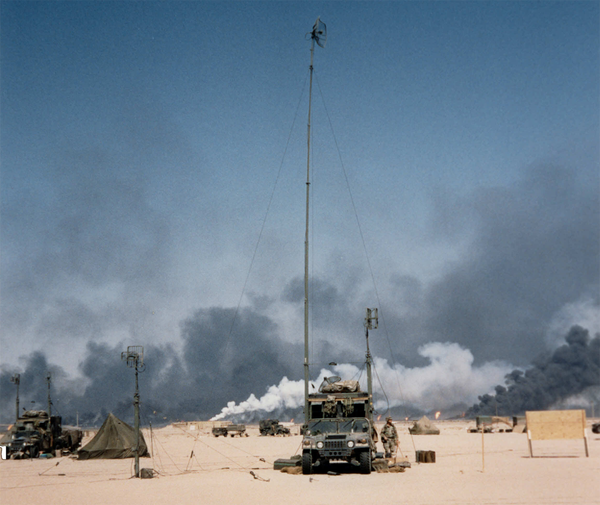
You may know that the military invented the Internet, but did you know that the U.S. Army's Mobile Subscriber Equipment (MSE) program was a precursor to today’s commercial cellular networks?
From the Battlefield to Your Pocket
The Earth's population is currently estimated at 7.2 billion people. Roughly six billion of them, or 85 percent, carry mobile phones. There is perhaps no invention in human history other than the wheel that is more universal. The cellphone packs an extraordinary amount of technology onto a few inches of silicon, yet is so commonplace as to be considered disposable. For all its familiarity, few people are aware that one of the first mobile phone networks sprung from the labs of United States Army Research and Development.

Army Soldiers orient a Mobile Subscriber Equipment communications tower. (Photo Credit: U.S. Army)
The Beginnings of MSE
In the 1980s, the U.S. military began looking for ways to update its battlefield communications network. The Army needed a replacement that offered enhanced range, better error correction, data capacity, and the ability to automate call routing and switching, which would allow signal operators to manage more users at once. In 1985, the Army selected GTE (now General Dynamics) as the prime contractor. A massive research effort yielded the first major leap in field communications since the World War II crystal radio Mobile Subscriber Equipment or MSE, the precursor to the modern mobile phone.

Mid-1980s Mobile Subscriber Equipment operators station inside an MSE truck. (Photo Credit: U.S. Army)
Inside the First Cellular Military Network
Mobile or cell networks are so named because calls jump from one zone, or cell, to the next as users move. They can operate completely wirelessly, relying on radio signals rather than hardwired copper cable. They provide data services such as fax or email alongside voice transmissions. Every user, know in tech-speak as a node, can reach every other user via a unique identifying number. All nodes may literally be mobile-callers can move about and stay connected so long as they remain within the coverage area. Researchers with the U.S. Army Communications-Electronics Command (CECOM) headquartered in Fort Monmouth, New Jersey, knew this kind of geographic flexibility was vital to modern battlefield communications.
They partnered with commercial companies like GTE, to develop a new system optimized for forward operating areas during battle, where permanent equipment was impractical and Soldiers were always on the move. Virtually all hardware would be truck-mounted, and all users would be free to move about without losing contact with rearward forces or each other.

A simplified Mobile Subscriber Equipment deployment diagram. (Photo Credit: U.S. Army)
MSEs First Trial By Fire Operation Desert Storm
In 1991, Mobile Subscriber Equipment would endure its first trial by fire. As wave after wave of GI's departed ally states in Europe for the deserts of Saudi Arabia and Kuwait, operations in the Gulf shifted into an offensive mode. The 93rd Signal Brigade sent 2500 Soldiers and 1700 items of equipment to this new theater. They would soon install and maintain an MSE network that spanned nearly 29,000 square miles.
As the Army commenced Operation Desert Storm, the Signal Corps put Mobile Subscriber Equipment to work. Forward troops discovered they could remain in constant contact with all units in the field and command elements behind the battle lines. Allied communications systems, in particular that of the British 1st Armored Division, were successfully integrated into Army infrastructure for the first time. MSE trucks were daisy chained at 30-kilometer intervals along the line of the Army's 3rd Armored Division advance, prompting Lieutenant General Frederick M. Franks, commander of the legendary Army VII Corps which led the assault of Baghdad to remark that the 3rd Armored Division had the best communications in the Corps. MSE had proven its tactical value during a hugely important first assault.

Mobile Subscriber Equipment antenna trucks in the Iraqi desert during Operation Desert Storm. (Photo Credit: U.S. Army)
Pioneering Military & Civilian Communications
Newer, more advanced tactical networks have now replaced the U.S. Army's Mobile Subscriber Equipment program, but its impact on modern military and civilian communications is unmatched. The technical capability pioneered by MSE allows people to connect to one another anywhere on the globe, which has not only saved the lives of U.S. Soldiers, but has changed the way people communicate.
Sources: U.S. Army and the National Museum of the United States Army

